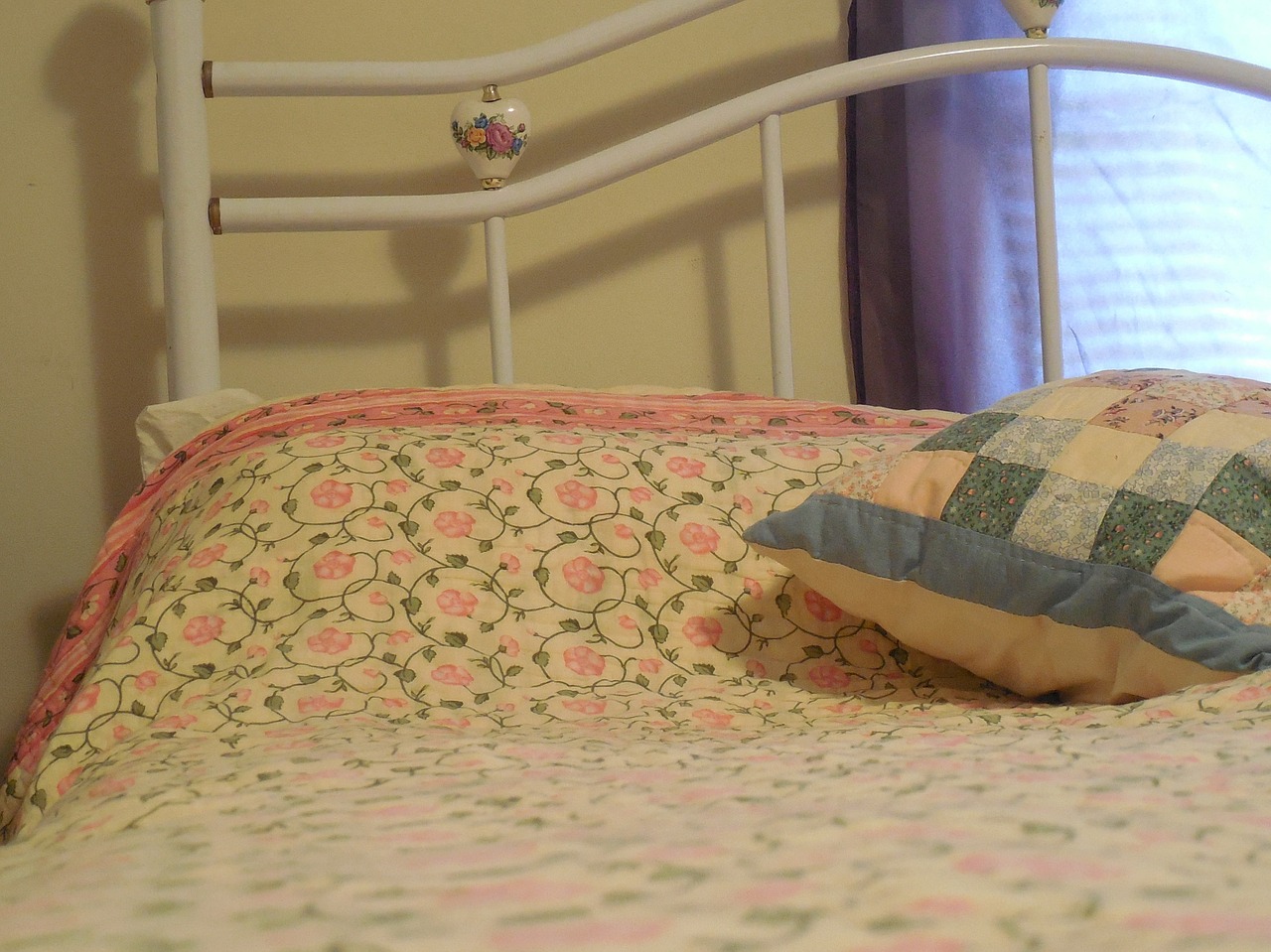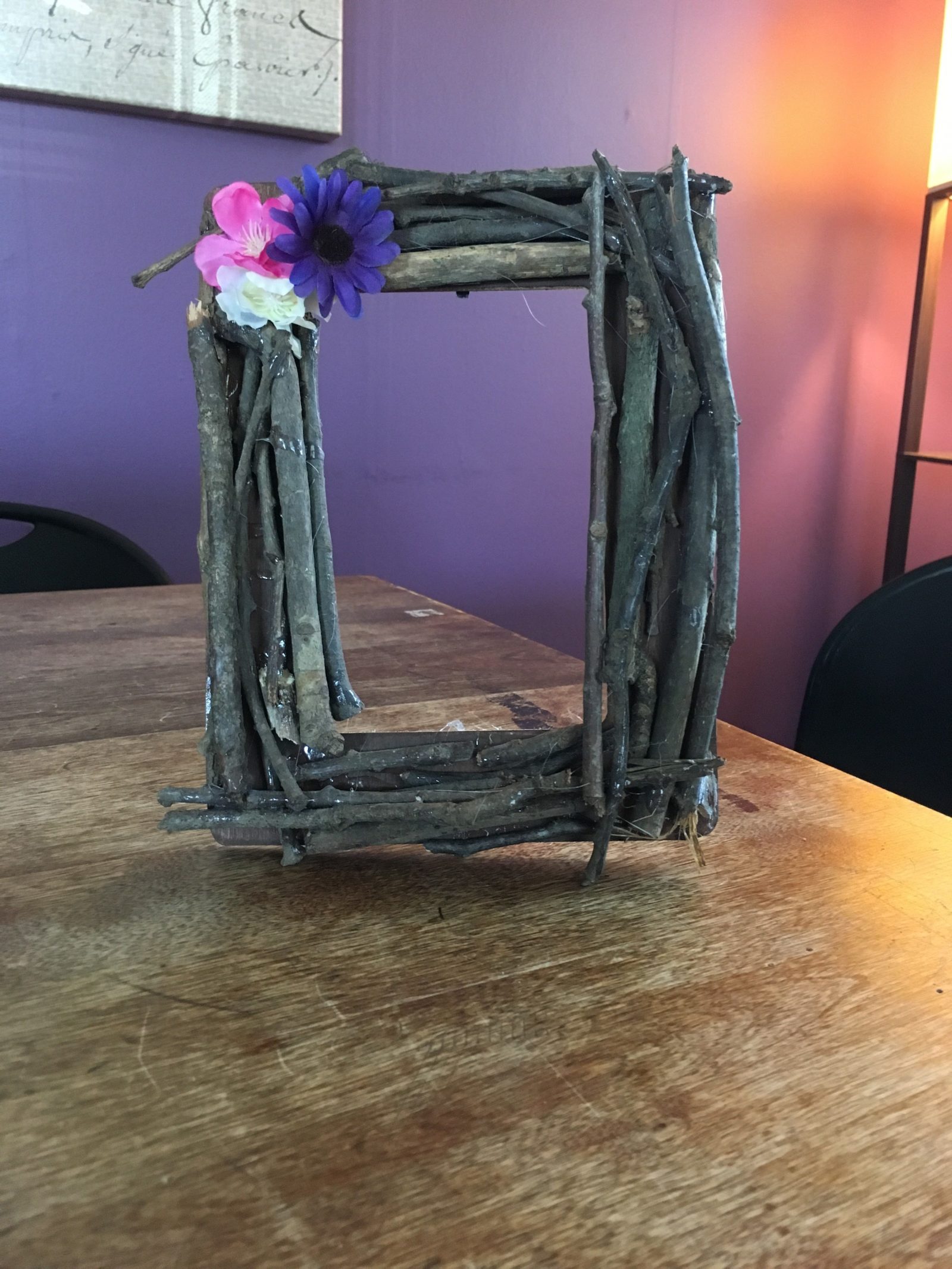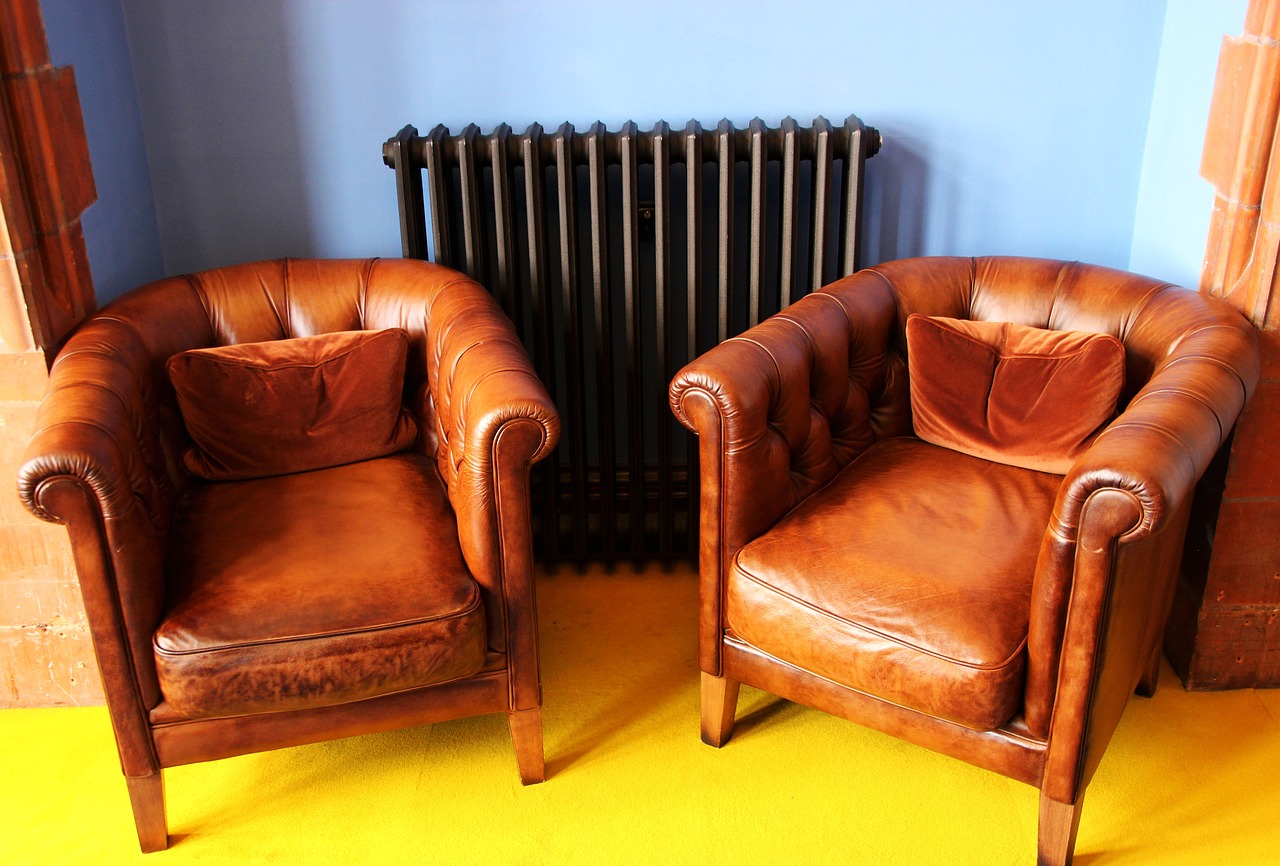Just as I had set out the watercolors, paper, paint brushes, and pens on the kitchen island at Magdalene house, the kitchen door opened and all of the Magdalene staff members walked in with pizza, cookies, and drinks. The other Magdalene intern Marlena and I had been preparing for the activity we’d be leading for the residents in our last group of the summer, and suddenly we were having a party, breaking bread and sharing memories and gratitude of our shared experiences together this summer. Each person in the room spoke about our experiences together over the past few weeks, the party wound down, and I was completely filled with sadness, joy, and gratitude.
“So,” one of the residents said once the staff members had returned to the office, “what are we doing today?” Once the party had started, I was not expecting that we would be doing the activity Marlena and I had planned, and I was once again overwhelmed with gratitude. Marlena and I pulled ourselves together and explained that we had planned to write psalms together and display them with visuals on watercolor paper. I had participated in psalm-writing activities with my student fellowship at UVA, and I was excited to give the women of Magdalene space and structure to address their higher power with praise and gratitude or sorrow and lament in a form of prayer to be used both individually and liturgically. Together we transitioned from a celebration over a shared meal to the creation of art and writings that were explicitly liturgical. I found myself for the final time this summer joyfully in community at the intersection of liturgy and the daily work of Magdalene.
To guide the women in their writing, Marlena and I provided formats for psalms of lament and psalms of praise. As we discussed the general parts of a psalm of lament, it became clear that their theological and liturgical functions were deeply felt and intuited by the residents. I found this to be particularly true of the “Confession of Trust” component of a psalm wherein the psalmist expresses her trust in God and her hope that God will assist and be present in her situation of suffering and sorrow. In our conversation—whether we were writing to God or our personal higher power—the women intuited this notion of simultaneous surrender and lament, trust and petition.
 In Serene Jones’ work Trauma and Grace: Theology and Healing in a Ruptured World, she examines the parallels between trauma theory and theologian John Calvin’s Commentary on the Psalms. According to Jones, Calvin’s progression through the psalms parallels progressions toward healing according to contemporary trauma theory. A key aspect of this healing—in trauma theory, Calvin, and the psalms—is reclaiming a sense of agency and autonomy. This is accomplished, in part, by relinquishing control. As Jones writes, in his reading of psalms of lament, “Calvin creates an imaginative space where those who have felt helplessness in the face of violence can once again imagine themselves as agents whose actions in the world matter,” she says, by trusting in a divinely-created and ordered world (57). Trauma research suggests that survivors “desperately need to believe that the world is fundamentally ordered and trustworthy if they, in turn, are to have the capacity to imagine themselves as meaningful actors within it again.” The paradoxical notion of giving up control in order to reclaim it is a necessary component of healing for women like the residents of Magdalene who have survived significant trauma. It is a constant give and take that arises intrinsically and liturgically in the psalms and works in the normalcy and mundaneness of daily life.
In Serene Jones’ work Trauma and Grace: Theology and Healing in a Ruptured World, she examines the parallels between trauma theory and theologian John Calvin’s Commentary on the Psalms. According to Jones, Calvin’s progression through the psalms parallels progressions toward healing according to contemporary trauma theory. A key aspect of this healing—in trauma theory, Calvin, and the psalms—is reclaiming a sense of agency and autonomy. This is accomplished, in part, by relinquishing control. As Jones writes, in his reading of psalms of lament, “Calvin creates an imaginative space where those who have felt helplessness in the face of violence can once again imagine themselves as agents whose actions in the world matter,” she says, by trusting in a divinely-created and ordered world (57). Trauma research suggests that survivors “desperately need to believe that the world is fundamentally ordered and trustworthy if they, in turn, are to have the capacity to imagine themselves as meaningful actors within it again.” The paradoxical notion of giving up control in order to reclaim it is a necessary component of healing for women like the residents of Magdalene who have survived significant trauma. It is a constant give and take that arises intrinsically and liturgically in the psalms and works in the normalcy and mundaneness of daily life.
It occurred to me as I reflected on the psalms written by the women of Magdalene that this notion of simultaneously reclaiming and relinquishing control is deeply related to the Serenity Prayer, which is part of a regular ritual in the lives of the Magdalene women.
God grant us the serenity to accept the things we cannot change,
The courage to change the things we can,
And the wisdom to know the difference.
This prayer, written by theologian Reinhold Niebuhr and popularized by twelve-step programs like Narcotics Anonymous, encapsulates the notion of giving up control as a means to gain autonomy and sovereignty over our lives. Members of this community are exposed to this deeply theological and liturgical notion in their regular attendance of NA meetings. Throughout my time at Magdalene, I’ve heard many of these women speak of a desire to recognize their lack of control over certain circumstances and apply this to their lives and relationships. In writing and discussing psalms together over a kitchen island full of art supplies it became clear that an idea examined in our space of liturgical creation is already deeply woven into daily moments and interactions for the women at Magdalene. In this moment of creativity and in many moments over the past months here, liturgy was created and was at work in the healing process.

 In this way, the Magdalene program itself is something of a healing balm. In Copeland’s work, she describes the Eucharist as “Jesus’ great nourishing sacrificial gift of his own life in the struggle to bring about this Father’s dream of love, mercy, joy, and peace” (108). For Copeland, the Eucharist is healing and nourishing. And while it does such healing, salvific work, it calls us to solidarity: “in sacramental reception [Christ’s] self-gift nourishes, strengthens, and orders us as we make visible his body through a praxis of solidarity, which counters the disorder of this world” and “sets the dynamics of love against the dynamics of domination” (109, 126). Being at Magdalene, I see a community that nourishes each other and stands together in loving solidarity, cooking meals for each other and proclaiming “Love Heals.” Divine, sacred work is done here. Being a small part of this community, I’ve come to know that “there are balms that soothe our souls and bodies and embracing them is a gift in this world” (Snake Oil, 100). This is true of the oils and balms used at Thistle Farms, and it is true of Magdalene in acts of kindness, care, and community. I’ve witnessed the women of Magdalene care for and be cared for as both individuals with physical needs and members of a community in a gentle and fierce, relentless and merciful divine praxis of solidarity.
In this way, the Magdalene program itself is something of a healing balm. In Copeland’s work, she describes the Eucharist as “Jesus’ great nourishing sacrificial gift of his own life in the struggle to bring about this Father’s dream of love, mercy, joy, and peace” (108). For Copeland, the Eucharist is healing and nourishing. And while it does such healing, salvific work, it calls us to solidarity: “in sacramental reception [Christ’s] self-gift nourishes, strengthens, and orders us as we make visible his body through a praxis of solidarity, which counters the disorder of this world” and “sets the dynamics of love against the dynamics of domination” (109, 126). Being at Magdalene, I see a community that nourishes each other and stands together in loving solidarity, cooking meals for each other and proclaiming “Love Heals.” Divine, sacred work is done here. Being a small part of this community, I’ve come to know that “there are balms that soothe our souls and bodies and embracing them is a gift in this world” (Snake Oil, 100). This is true of the oils and balms used at Thistle Farms, and it is true of Magdalene in acts of kindness, care, and community. I’ve witnessed the women of Magdalene care for and be cared for as both individuals with physical needs and members of a community in a gentle and fierce, relentless and merciful divine praxis of solidarity. Notebook, water bottle, and grocery bag full of notecards in hand, the other intern Marlena and I headed across the street to the largest of the Magdalene Houses where community meetings are held. For this session of the weekly group we lead, we would be discussing encouragement as a spiritual practice and writing notes to people we knew who we either wanted to celebrate or to encourage during difficult times. The discussion started out fairly smoothly. We gave examples of times we had felt encouraged, times we had felt that we weren’t encouraged when we needed to be, and how it felt to give and receive encouragement. I introduced the idea of encouragement as rooted in spirituality wherein we seek “to instill courage, confidence, and hope through expressing the delight of God in others” (Calhoun, Spiritual Disciplines Handbook, 198). Each of the residents who spoke during the conversation did so affirmatively, sharing how they had seen God or their personal higher power working in each other throughout their time in the Magdalene community. They seemed to internalize the practice of encouragement fairly easily, until Sandra
Notebook, water bottle, and grocery bag full of notecards in hand, the other intern Marlena and I headed across the street to the largest of the Magdalene Houses where community meetings are held. For this session of the weekly group we lead, we would be discussing encouragement as a spiritual practice and writing notes to people we knew who we either wanted to celebrate or to encourage during difficult times. The discussion started out fairly smoothly. We gave examples of times we had felt encouraged, times we had felt that we weren’t encouraged when we needed to be, and how it felt to give and receive encouragement. I introduced the idea of encouragement as rooted in spirituality wherein we seek “to instill courage, confidence, and hope through expressing the delight of God in others” (Calhoun, Spiritual Disciplines Handbook, 198). Each of the residents who spoke during the conversation did so affirmatively, sharing how they had seen God or their personal higher power working in each other throughout their time in the Magdalene community. They seemed to internalize the practice of encouragement fairly easily, until Sandra This group session in the park presented an opportunity to have fun together in community as we worked on our individual frames. A key component of this creative task was play. According to Bonhoeffer, play “goes beyond the categories of doing, having, and achieving and leads us into the categories of being, of authentic human existence and demonstrative rejoicing in it. It emphasizes the creative against the productive and the aesthetic against the ethical” (de Gruchy, 157). Though this project was centered around the practice of a spiritual discipline, what we were asking the women to do in the park that day was to play. We had an hour to be away from the Magdalene houses and offices, work, therapy, and other responsibilities. As Bonhoeffer understood, play is a necessary experience for flourishing. As the women work and learn to gain independence and full autonomy upon graduation from the program, these moments that “break open fresh possibilities” are a necessary part of healing. Just as Slowing counters mental hurriedness, play counters the constant emotional work that comes with the healing process. It cuts through the inevitable tension in a community of trauma survivors. Play has true, relentless, strong, salvific, redemptive power.
This group session in the park presented an opportunity to have fun together in community as we worked on our individual frames. A key component of this creative task was play. According to Bonhoeffer, play “goes beyond the categories of doing, having, and achieving and leads us into the categories of being, of authentic human existence and demonstrative rejoicing in it. It emphasizes the creative against the productive and the aesthetic against the ethical” (de Gruchy, 157). Though this project was centered around the practice of a spiritual discipline, what we were asking the women to do in the park that day was to play. We had an hour to be away from the Magdalene houses and offices, work, therapy, and other responsibilities. As Bonhoeffer understood, play is a necessary experience for flourishing. As the women work and learn to gain independence and full autonomy upon graduation from the program, these moments that “break open fresh possibilities” are a necessary part of healing. Just as Slowing counters mental hurriedness, play counters the constant emotional work that comes with the healing process. It cuts through the inevitable tension in a community of trauma survivors. Play has true, relentless, strong, salvific, redemptive power. One of my main duties as an intern at Magdalene is answering the phone to take messages, tell prospective women or social workers about the program, and to complete entrance request applications that put a prospective resident on our waiting list. These applications require me to ask very personal questions regarding the particular woman’s history. While I’m constantly struck by their honesty and willingness to share in order to seek help in our program, I can imagine that talking to me, a stranger, over the phone about mental illness, addiction, and prostitution is not an easy thing to do. Having daily conversations with women seeking entrance into the program alongside daily interactions with women currently in the program adds an entirely new dimension to my reflection on personal narrative and healing.
One of my main duties as an intern at Magdalene is answering the phone to take messages, tell prospective women or social workers about the program, and to complete entrance request applications that put a prospective resident on our waiting list. These applications require me to ask very personal questions regarding the particular woman’s history. While I’m constantly struck by their honesty and willingness to share in order to seek help in our program, I can imagine that talking to me, a stranger, over the phone about mental illness, addiction, and prostitution is not an easy thing to do. Having daily conversations with women seeking entrance into the program alongside daily interactions with women currently in the program adds an entirely new dimension to my reflection on personal narrative and healing.
 In preparation for the session, Marlena and I had discussed the experience of feeling overwhelmed or emotionally chaotic. What do we do in our own lives to bring us back to where we are? When I’m feeling overwhelmed, I can lose my sense of presence in the moment and in the world around me. This loss of presence can be particularly acute for people like the women of Magdalene House who have suffered significant trauma. As Serene Jones writes in Trauma and Grace: Theology in a Ruptured World, people who have histories of trauma can “physically disconnect their minds from their experiences of embodiment,” a phenomenon clinically referred to as dissociation (16).
In preparation for the session, Marlena and I had discussed the experience of feeling overwhelmed or emotionally chaotic. What do we do in our own lives to bring us back to where we are? When I’m feeling overwhelmed, I can lose my sense of presence in the moment and in the world around me. This loss of presence can be particularly acute for people like the women of Magdalene House who have suffered significant trauma. As Serene Jones writes in Trauma and Grace: Theology in a Ruptured World, people who have histories of trauma can “physically disconnect their minds from their experiences of embodiment,” a phenomenon clinically referred to as dissociation (16). One of the founding ideas of the Project on Lived Theology is that “the concrete forms of God’s presence and action in the world promise rich and generative material for theological method, style, and pedagogy,” as Charles Marsh puts it in his Introduction to Lived Theology: New Perspectives on Method, Style, and Pedagogy. Our interactions with the presence of God as they happen in real time and in particular places have substantive theological significance. As my theological mentor Nichole Flores told me the other day, “If you’re going to have an encounter with God this summer, it’s going to be when and where you are.” God meets us where we are just as the Magdalene staff meets the women where they are within the sacred space and time of the Magdalene homes and recovery program.
One of the founding ideas of the Project on Lived Theology is that “the concrete forms of God’s presence and action in the world promise rich and generative material for theological method, style, and pedagogy,” as Charles Marsh puts it in his Introduction to Lived Theology: New Perspectives on Method, Style, and Pedagogy. Our interactions with the presence of God as they happen in real time and in particular places have substantive theological significance. As my theological mentor Nichole Flores told me the other day, “If you’re going to have an encounter with God this summer, it’s going to be when and where you are.” God meets us where we are just as the Magdalene staff meets the women where they are within the sacred space and time of the Magdalene homes and recovery program.